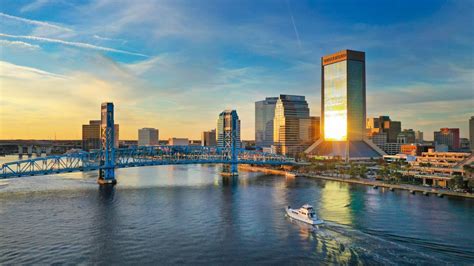Florida, renowned for its sun-kissed beaches, vibrant cities, and exciting attractions, often captivates the hearts of potential residents and tourists alike. However, beneath its alluring facade lies a myriad of drawbacks that can dampen the Sunshine State’s allure. From its oppressive heat and hurricanes to its high cost of living and crime rates, Florida presents a complex tapestry of challenges that prospective dwellers should carefully consider before casting their anchor.

1. Intense Heat and Humidity
Florida’s subtropical climate, characterized by long, hot summers and mild winters, can be unforgiving for those unaccustomed to intense heat and humidity. During the summer months, temperatures routinely soar into the 90s, accompanied by humidity levels that hover around 70%. This oppressive combination can make spending time outdoors a challenging and uncomfortable ordeal. Even in the winter, temperatures rarely drop below 50 degrees Fahrenheit, making it difficult to escape the heat.
According to the National Oceanic and Atmospheric Administration (NOAA), Florida ranks among the top five states in the United States with the highest average annual temperatures. In 2020, the state experienced an average temperature of 72.2 degrees Fahrenheit, significantly higher than the national average of 53.4 degrees Fahrenheit.
2. Frequent Hurricanes and Tropical Storms
Florida’s geographical location makes it highly susceptible to hurricanes and tropical storms. The state’s long coastline, which stretches for over 1,350 miles, provides an easy entry point for these destructive weather events. On average, Florida experiences approximately 10 named storms per year, of which four are likely to reach hurricane strength.
The National Hurricane Center (NHC) reports that Florida has been hit by more than 100 hurricanes since 1851. Some of the most devastating hurricanes in recent history include Hurricane Andrew in 1992, Hurricane Charley in 2004, and Hurricane Irma in 2017. These storms caused widespread damage and flooding, resulting in billions of dollars in losses and dozens of fatalities.
3. High Cost of Living
Florida’s cost of living is significantly higher than the national average. According to the Council for Community and Economic Research (C2ER), Florida ranks as the 11th most expensive state to live in the United States. The state’s housing costs are particularly high, with the median home price hovering around $300,000. This makes it difficult for many people to afford a comfortable lifestyle in Florida.
The C2ER’s 2021 Cost of Living Index shows that Florida’s overall cost of living is 9% higher than the national average. This means that a person who spends $100,000 per year in Florida would have to spend approximately $109,000 per year to maintain the same standard of living in another state.
4. High Crime Rates
Florida has consistently ranked among the top states in the United States for crime. According to the FBI’s Uniform Crime Reporting Program, Florida had a violent crime rate of 366.7 per 100,000 people in 2020, which is higher than the national average of 363.4 per 100,000 people. The state also had a property crime rate of 2,217.1 per 100,000 people, which is significantly higher than the national average of 2,031.2 per 100,000 people.
Some of the most common crimes in Florida include theft, assault, and robbery. The state also has a high rate of drug-related crimes and gang-related violence. In 2020, Florida had the second-highest number of drug overdose deaths in the United States, with over 7,500 deaths.
5. Excessive Tourism
Florida’s popularity as a tourist destination can also be a drawback for residents. The state attracts over 120 million visitors each year, which can lead to overcrowding, traffic congestion, and higher prices. During peak tourist season, it can be difficult to find a parking spot or a table at a restaurant. The influx of tourists can also put a strain on local resources, such as water and sewage systems.
According to the Florida Department of Tourism, the tourism industry generated over $91 billion in revenue in 2021. However, this revenue comes at a cost. The state’s infrastructure, natural resources, and residents’ quality of life can suffer from the negative
